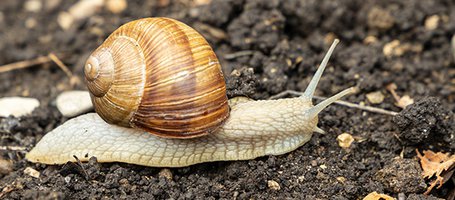How and when to prune
Even if the plants in your garden are thriving without any help from you, pruning is still an essential method for keeping growth in check and for encouraging flowers and fruit.
To ensure that your intervention is effective, you first have to consider what type of tree you're dealing with. Each plant type has its own specific pruning techniques that must be used at different times of the year, depending on the result you want to achieve.
While garden shrubs such as hedges, roses and some fruit trees can pruned more frequently, conifers and other trees such as cherry and horse-chestnut are more delicate and should not be pruned too often or too drastically.
To avoid mistakes, check the branches: if the tree produces fruit on last year's branches, simply remove the non-productive branches after flowering, at the end of summer. If on the other hand the tree produces flowers and fruit on this year's branches, then you need to prune more than once: first, in winter to remove the old or broken branches, and then again in spring to shorten the branches that grew in the previous year.
Pruning olive trees
The right way to prune olive trees will vary according to the type of soil and climate in which the tree is growing. Normally, however, we follow the tree's growth cycle, we carry out formative pruning, removing basal shoots (at the base of the tree), epicormic shoots on the trunk) and any damaged or dead branches. The aim is to thin out the branches to create a well-spaced canopy, so that the air, sunlight and birds can pass through it freely.
Some people prefer to prune olive trees in winter, while the plant is dormant, while others prefer to carry out a little light pruning during summer. In either case, the purpose of the operation is to promote evenly distributed fruit production on the branches, particularly in period when fruiting is less prolific.
Pruning grape vines
Grape vines undergo two types of pruning: green pruning in summer, essential to create a well-defined shape, and dry pruning in winter, which serves to maintain the shape while also controlling the number of buds left on the plant. This last operation is very important for optimising the quantity and quality of the fruit crop.
As a result of differing climatic conditions, the timing of winter pruning varies considerably from region to region. In northern regions, winter pruning is delayed until the coldest period is over, while in the south - where there is less risk of frost damage - pruning may even take place as early as autumn.
Pruning lemon trees
Pruning lemon trees is a very delicate operation. Firstly, because the tree naturally tends to develop a dense canopy of branches, which prevents fruit from forming, and secondly, because, when thinning out, we must be very careful not to cut off the few branches which will bear fruit. The best solution is to alternate light pruning with more radical pruning operations. In all cases, it is not advisable to prune lemons in the coldest period of the year or when the first flowers appear, as this can cause the flowers to drop off the plant.
When cutting branches, try to prune them evenly throughout the entire crown, so as to allow air and sunshine to penetrate easily. If the branches are too thick for secateurs, you can use a pruning saw. To avoid infection by disease and parasites, cut the branches obliquely and then apply sealer or mastic. Always wear gloves and safety glasses: the thinner branches have very vicious thorns.
Pruning apple trees
To produce fruit of good quality and in the quantity desired, apple trees require different approaches to pruning according to their age and the time of year. Formative pruning - which usually take place in early autumn - helps form the shape of young trees, while maintenance pruning - which takes place during winter - serves to encourage fruiting of adult trees and to achieve a correct balance of vegetation and fruit.
As this is a tree that produces fruit on old branches, it is always best to prune only in moderation, limiting yourself to removing dead or damaged branches. To cut the smaller branches you will need a pair of pruning shears or loppers, while a telescopic pruner like the PTX 2710 is ideal for higher branches.





